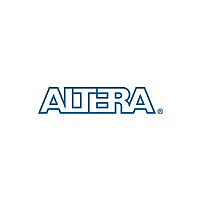epm2210gm100i Altera Corporation, epm2210gm100i Datasheet - Page 54

epm2210gm100i
Manufacturer Part Number
epm2210gm100i
Description
Section I. Max Ii Device Family Data Sheet
Manufacturer
Altera Corporation
Datasheet
1.EPM2210GM100I.pdf
(108 pages)
- Current page: 54 of 108
- Download datasheet (2Mb)
IEEE Std. 1149.1 (JTAG) Boundary-Scan Support
3–4
MAX II Device Handbook, Volume 1
JTAG Block
The MAX II JTAG block feature allows you to access the JTAG TAP and
state signals when either the USER0 or USER1 instruction is issued to the
JTAG TAP. The USER0 and USER1 instructions bring the JTAG
boundary-scan chain (TDI) through the user logic instead of the MAX II
device’s boundary-scan cells. Each USER instruction allows for one
unique user-defined JTAG chain into the logic array.
Parallel Flash Loader
The JTAG block ability to interface JTAG to non-JTAG devices is ideal for
general-purpose flash memory devices (such as Intel- or Fujitsu-based
devices) that require programming during in-circuit test. The flash
memory devices can be used for FPGA configuration or be part of system
memory. In many cases, the MAX II device is already connected to these
devices as the configuration control logic between the FPGA and the flash
device. Unlike ISP-capable CPLD devices, bulk flash devices do not have
JTAG TAP pins or connections. For small flash devices, it is common to
use the serial JTAG scan chain of a connected device to program the
non-JTAG flash device. This is slow and inefficient in most cases and
impractical for large parallel flash devices. Using the MAX II device’s
JTAG block as a parallel flash loader, with the Quartus II software, to
program and verify flash contents provides a fast and cost-effective
means of in-circuit programming during test.
being used as a parallel flash loader.
Core Version a.b.c variable
Figure 3–1
Altera Corporation
shows MAX II
December 2007
Related parts for epm2210gm100i
Image
Part Number
Description
Manufacturer
Datasheet
Request
R

Part Number:
Description:
(EPMxxxx) JTAG & In-System Programmability
Manufacturer:
Altera Corporation
Datasheet:

Part Number:
Description:
CPLD, EP610 Family, ECMOS Process, 300 Gates, 16 Macro Cells, 16 Reg., 16 User I/Os, 5V Supply, 35 Speed Grade, 24DIP
Manufacturer:
Altera Corporation
Datasheet:

Part Number:
Description:
CPLD, EP610 Family, ECMOS Process, 300 Gates, 16 Macro Cells, 16 Reg., 16 User I/Os, 5V Supply, 15 Speed Grade, 24DIP
Manufacturer:
Altera Corporation
Datasheet:

Part Number:
Description:
Manufacturer:
Altera Corporation
Datasheet:

Part Number:
Description:
CPLD, EP610 Family, ECMOS Process, 300 Gates, 16 Macro Cells, 16 Reg., 16 User I/Os, 5V Supply, 30 Speed Grade, 24DIP
Manufacturer:
Altera Corporation
Datasheet:

Part Number:
Description:
High-performance, low-power erasable programmable logic devices with 8 macrocells, 10ns
Manufacturer:
Altera Corporation
Datasheet:

Part Number:
Description:
High-performance, low-power erasable programmable logic devices with 8 macrocells, 7ns
Manufacturer:
Altera Corporation
Datasheet:

Part Number:
Description:
Classic EPLD
Manufacturer:
Altera Corporation
Datasheet:

Part Number:
Description:
High-performance, low-power erasable programmable logic devices with 8 macrocells, 10ns
Manufacturer:
Altera Corporation
Datasheet:

Part Number:
Description:
Manufacturer:
Altera Corporation
Datasheet:

Part Number:
Description:
Manufacturer:
Altera Corporation
Datasheet:

Part Number:
Description:
Manufacturer:
Altera Corporation
Datasheet:

Part Number:
Description:
CPLD, EP610 Family, ECMOS Process, 300 Gates, 16 Macro Cells, 16 Reg., 16 User I/Os, 5V Supply, 25 Speed Grade, 24DIP
Manufacturer:
Altera Corporation
Datasheet:

Part Number:
Description:
Manufacturer:
Altera Corporation
Datasheet:










